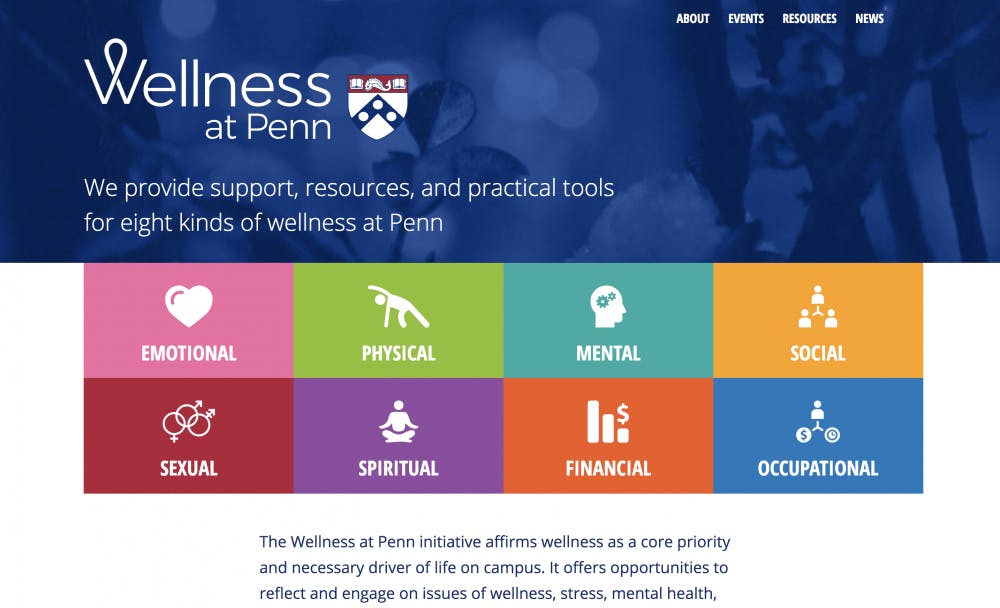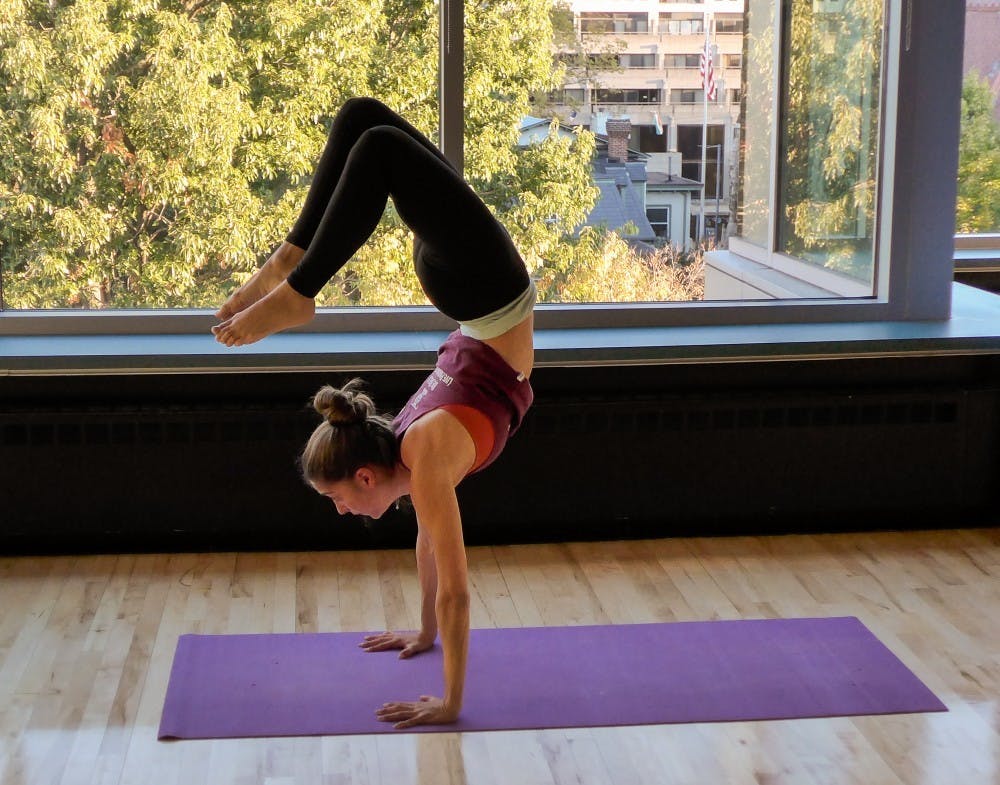
Penn has unveiled a wellness website three months after announcing plans to do so in October last year.
Paired with this initiative, the Campus Conversation was announced and held on Oct. 30. It set out to start a discussion on what the University could do to foster wellness in the wake of student deaths, natural disasters, and political instability.
This announcement comes amid a series of student deaths at Penn. On Dec. 31, College freshman William Steinberg died in a plane accident with his family, becoming the eighth Penn student to die in 2017. Following his death, reports emerged that College sophomore Blaze Bernstein had died in a homicide. Samuel Woodward, a high school friend of Bernstein's, has been arrested in connection to his murder, which may potentially be investigated as a hate crime. Less than a week after Bernstein was found dead in Orange County, Calif., Penn Law student Jonathan Lumpkin, 25, died in his apartment in Sansom Place East.
Penn’s reconvened mental health task force concluded last summer that ongoing initiatives around mental health were adequately addressing student needs, though students on Penn's campus have indicated an increased desire for dialogue around mental health at Penn and what administrators can do to improve it.
In an email sent to the Penn community on Jan. 23, Penn President Amy Gutmann and Provost Wendell Pritchett announced the wellness website's launch. The email also introduced a section of the website where students can submit ideas on how to improve the website and general campus wellness.
“We make it clear in the email that we expect [the website] to change,” Pritchett told The Daily Pennsylvanian. “We want the community to give us advice about how to make it as good a webpage as it can be.”

The wellness portal aims to centralize all of the University's resources, events, and news, dividing the topic of wellness into eight distinct types: emotional, physical, mental, social, sexual, spiritual, financial, and occupational.
Under each of the eight tabs on the website, there is a list of resources related to the specific type of wellness and a list of events at Penn that students can attend to focus on wellness.
In addition to the schedule of upcoming wellness events for the Penn community, users can access news from sources like the DP and Almanac, with the goal of making resources more accessible.
The wellness portal — along with a revamped version of the "Take Your Professor to Lunch Campaign" and expanded College programming — is part of the University's Campaign for Wellness. It operates as part of the Campaign for Community, an initiative launched in April 2015 to promote events centered around racial diversity and freedom of speech.
“It’s not unfixable,” Faculty Senate Chair-Elect Jennifer Pinto-Martin, a nursing professor, said. “When I hear [Gutmann and Provost Wendell Pritchett] talk about this, I can see that this is something they care deeply about. It’s going to make a big difference.”
The campaign is a response to issues that student leaders have brought up during meetings with administrators and in the Campus Conversation, Undergraduate Assembly Vice President Jay Shah said.
During their meetings with administrators, student leaders frequently discussed increasing participation in the program, Pritchett said.
“They did a lot of listening to the problems on campus and part of what they heard was the resources are really disconnected, you don’t know who to call when you need to do something,” Pinto-Martin said. “This will be a one-stop shop.”
The campaign also includes a revamped “Take Your Professor to Lunch” program which aims to facilitate closer relationships between faculty and students and to address the fact that many students reported feeling distanced from their professors, Shah said.
Pinto-Martin added that the program will provide students with a chance to feel that they have “a trusted adult that cares about [their] well being.”
“Many of my classes are over 100 people, and coming into Penn, sometimes not really knowing your professors — when you had great relationships with your teachers in high school — can be a bit scary,” Shah said.
“Getting to know your professor plays a big role in making the campus a smaller space. And that’s what we need, to make the campus feel smaller,” Shah added.
In addition to more wellness events in the college houses and the Division of Recreation, Counseling and Psychological Services is looking to expand its I CARE program as part of the campaign.
“We are interested in continuing to expand it and providing the training to more and more members of our community,” Pritchett said.
”That training is ongoing. It happens every week at this point,” he added
However, for the campaign to have a long-term impact, students also need to put in effort, Shah added.
“It also depends on how we treat other students, such as club recruitment and how that impacts students early on,” Shah said. “We really need to prioritize our well being in terms of getting sleep, eating healthy and taking time for ourselves.”
Correction: A previous version of this article stated that College freshman William Steinberg was the eighth student to die by suicide in 2017. The article now reflects that he was the eighth student to die in 2017. The Daily Pennsylvanian regrets this error.
The Daily Pennsylvanian is an independent, student-run newspaper. Please consider making a donation to support the coverage that shapes the University. Your generosity ensures a future of strong journalism at Penn.
Donate



